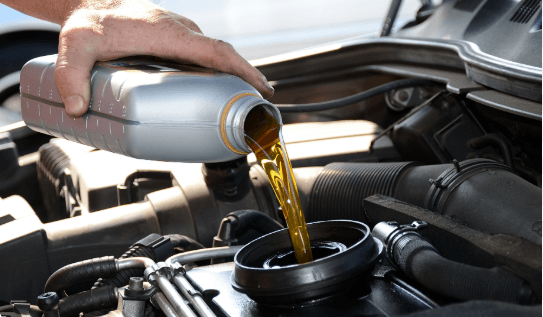The Future of Oils: How Smarter Lubrication Is Powering the Next Industrial Revolution

When I first started working with equipment engineers and operators a decade ago, one thing became clear fast: no matter how advanced your machinery is, everything depends on the oil that runs through it.
Oils aren’t just lubricants — they’re performance multipliers. They decide whether an engine lasts 15,000 hours or 5,000, whether maintenance costs shrink or spiral, and whether sustainability is a promise or a PR line.
Yet, for something so essential, oils are often misunderstood. Many teams still see them as a commodity instead of a strategic tool for efficiency, reliability, and cost control. That mindset is changing — fast.
In this piece, I’ll unpack how industrial and automotive oils are evolving, what that means for manufacturers and mechanics, and how companies that think like Hi-Tec Oils — data-driven, performance-focused, and sustainability-conscious — are defining a new era of lubrication.
Table: The Major Oil Types at a Glance
| Oil Type | Primary Use | Key Advantage | Best For | Maintenance Impact |
|---|---|---|---|---|
| Engine Oil | Combustion engines | Heat stability & wear protection | Fleet vehicles, transport | Extends engine life |
| Hydraulic Oil | Power transfer | Smooth control & pressure consistency | Heavy machinery, mining | Prevents pump wear |
| Gear Oil | High-load systems | Shock absorption & gear protection | Industrial gearboxes | Reduces downtime |
| Compressor Oil | Air systems | Reduces friction & carbon buildup | Workshops, factories | Maintains efficiency |
| Transmission Fluid | Vehicle systems | Smooth shifting & heat control | Trucks, cars | Improves drivability |
1. Why Industrial Oils Matter More Than Ever
The industrial economy is changing. Automation, electrification, and data-driven maintenance have pushed machinery to operate under higher loads and tighter tolerances. Oils now have to do more than just reduce friction — they have to perform as part of the machine’s intelligence loop.
A single oil change interval that’s miscalculated can mean:
- A $10,000 gearbox repair
- 48 hours of unplanned downtime
- Or a lost production run worth hundreds of thousands
Modern oils are formulated not only to reduce wear but to communicate — through sensors, oil analysis data, and AI-driven maintenance systems. That’s why choosing the right oil has shifted from a purchasing decision to a technical strategy.
2. From Mineral to Synthetic: The Chemistry of Performance
Let’s be honest — most operators don’t care about the chemistry of oils until something breaks. But if you’re running machinery that costs millions, understanding oil base stocks and additives is no longer optional.
Mineral Oils: The Traditional Workhorse
Refined from crude petroleum, mineral oils are cost-effective and widely available. They work well for general applications but break down faster at high temperatures or extreme pressures.
Synthetic Oils: Engineered for Precision
Synthetic oils, by contrast, are designed molecule by molecule for performance. They resist oxidation, handle temperature extremes, and provide consistent lubrication under variable loads.
That’s why modern formulations — like those from Hi-Tec Oils — are often fully or partially synthetic. The consistency means predictable viscosity, cleaner operation, and longer service intervals.
Additives: The Secret Ingredients
The additives inside oils do most of the heavy lifting. They prevent corrosion, disperse contaminants, and keep moving parts clean. For example:
- Anti-wear agents form protective layers on metal surfaces.
- Detergents neutralize acids.
- Antioxidants slow oil degradation.
When combined correctly, the chemistry of these additives is the difference between a machine that runs efficiently for years and one that fails after months.
3. Comparing Oil Types by Application
If you manage equipment across different sectors, you already know — not all oils are created equal. Below is a closer comparison of how major oil types perform in industrial and automotive settings.
Engine Oils
Used in vehicles and generators, engine oils face high temperatures and contamination from combustion.
Pros: Excellent wear protection and detergent action.
Cons: Require regular replacement due to soot accumulation.
Best for: Fleet operators, logistics companies, and construction equipment.
Hydraulic Oils
Hydraulic oils are the power lifeblood of modern machinery.
Pros: Excellent fluidity, pressure stability, and anti-foam properties.
Cons: Sensitive to water and air contamination.
Best for: Excavators, manufacturing lines, and forklifts.
Gear Oils
These oils protect against extreme pressure in gears and transmissions.
Pros: Superior load-bearing and anti-wear performance.
Cons: High viscosity can create drag if misapplied.
Best for: Gearboxes, winches, and heavy-duty trucks.
Compressor Oils
These oils operate in high-speed environments under constant heat.
Pros: Prevent carbon buildup and improve air efficiency.
Cons: Must match compressor type (rotary, screw, or piston).
Best for: Air systems in factories and workshops.
Each of these oils has evolved dramatically in the last decade — not just chemically, but digitally.
4. The Digital Shift: From Reactive to Predictive Maintenance
Ten years ago, oil changes were scheduled by time — every 3,000 hours, every six months, etc. Today, maintenance is driven by data.
Sensors now track oil condition in real time, measuring viscosity, water content, and particulate matter. That data feeds into predictive systems that can alert you before damage occurs.
I’ve seen companies cut maintenance costs by up to 40% just by combining smart sensors with high-quality lubricants.
Here’s the catch: using cheap oil with a smart system doesn’t make the system smart — it just feeds it bad data. Predictive maintenance only works if the oil itself maintains stability under load. That’s why industrial players are pairing AI-driven maintenance systems with premium synthetic oils.
5. Hi-Tec Oils and the Science of Reliability
I’ve spent years consulting startups and industrial firms on operational efficiency, and one trend is clear: the companies that treat lubrication as a science outperform those that treat it as an afterthought.
Brands like Hi-Tec Oils exemplify this shift. They’ve moved beyond selling products to providing performance solutions — oils engineered for durability, energy efficiency, and environmental compliance.
What sets their approach apart is balance: technical precision meets practical application. Their range spans automotive, industrial, and agricultural sectors, with formulations tested for real-world challenges — high load, high heat, and high productivity environments.
But this isn’t about brand loyalty. It’s about mindset: treating oil as a strategic enabler of reliability.
6. Education and Upskilling: Why Lubrication Knowledge Is a Superpower
If there’s one skill I wish more plant managers and mechanics invested in, it’s lubrication science.
That’s where Online Lubrication Courses & Certification programs are making a real difference. These programs teach what most operators overlook — oil sampling, contamination control, viscosity selection, and filtration techniques.
A few years ago, I worked with a mining company that had three consecutive hydraulic failures. The root cause wasn’t bad parts — it was improper oil storage and contamination. After enrolling their team in a lubrication certification course, they cut downtime by 60%.
These courses transform lubrication from a maintenance task into a data-driven discipline. And with more courses available online, learning is no longer limited to big corporations — even small operators can upskill.
7. Sustainability and the New Lubrication Economy
Sustainability used to be a checkbox item. Now, it’s an engineering constraint. Industrial clients are under increasing pressure to reduce waste oil, emissions, and energy losses — without sacrificing performance.
The answer? Smarter formulations and longer oil life.
Synthetic oils, especially those built for extended drain intervals, minimize waste and reduce environmental impact. Add to that biodegradable hydraulic fluids and low-toxicity greases, and we’re starting to see a shift toward a circular lubrication economy — where performance and planet are not at odds.
Forward-looking firms are also implementing oil recycling and reconditioning systems, extending lubricant lifespans by filtering and rebalancing additives instead of replacing the entire batch.
This is the direction the industry is heading, and it’s aligned with what companies like Hi-Tec Oils are pioneering globally.
8. Choosing the Right Oil: A Decision Framework
Most people choose oils based on brand or price. That’s fine — until downtime costs more than the oil ever could.
Here’s a simple framework I use when advising industrial clients:
| Factor | Why It Matters | Key Question |
|---|---|---|
| Viscosity | Affects film strength and efficiency | Does the oil stay stable at operating temperature? |
| Load Conditions | Determines additive requirements | Are parts under constant or shock load? |
| Environment | Impacts oxidation and contamination | Is it dusty, humid, or high-temperature? |
| Maintenance Goals | Defines oil life and filtration | Do you aim for long drains or easy monitoring? |
| Compliance | Ensures environmental safety | Does it meet ISO, OEM, and EPA standards? |
It’s a checklist that separates educated decisions from expensive mistakes.
9. The Future: Oils as Data Carriers
Here’s what excites me most about the next decade: oils will become data sources.
Imagine oil that can report its own degradation, detect contamination, or self-adjust its viscosity using embedded nanotechnology. Some of these innovations are already in prototype phases — combining lubricant chemistry with materials science and machine learning.
For industries chasing uptime and efficiency, this means oils won’t just lubricate — they’ll communicate. The companies that learn to interpret that data early will lead the next wave of industrial innovation.
10. The Takeaway
Oils have come a long way from being simple lubricants. Today, they’re strategic assets that affect efficiency, cost, and sustainability.
The smartest industrial operators are those who:
- Invest in high-performance synthetic oils (like those developed by Hi-Tec Oils)
- Train their teams through Online Lubrication Courses & Certification
- Integrate oil analytics into their predictive maintenance systems
That combination — quality products, skilled people, and data — is what drives the next generation of reliability.
Frequently Asked Questions (FAQ)
1. How often should industrial oil be changed?
It depends on the system and oil type. With synthetic oils and condition monitoring, change intervals can be extended significantly — sometimes two to three times longer than mineral oils.
2. Is synthetic oil worth the cost for industrial use?
Yes. The upfront cost is offset by lower wear, better energy efficiency, and reduced maintenance downtime.
3. How does oil contamination happen?
Common sources include poor storage, water ingress, and airborne dust. Proper handling and filtration are key.
4. Can oil analysis really predict failures?
Absolutely. Oil analysis detects wear metals, oxidation, and contamination — allowing maintenance before failure occurs.
5. Are biodegradable oils reliable for heavy-duty operations?
Modern biodegradable oils perform nearly as well as traditional ones, especially in hydraulic and gear applications where environmental compliance matters.
Final Thoughts
I’ve worked with startups and industrial teams that treat oils like a side note — and others that treat them as a strategy. The difference in performance, uptime, and profitability is staggering.
As equipment gets smarter, the oils inside them need to be just as intelligent. The companies that recognize this — and invest in both premium lubricants and the training to use them effectively — will stay ahead of the curve.
Industrial success isn’t just powered by technology anymore. It’s powered by precision, insight, and the oil that makes everything move.




